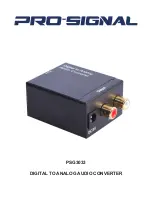
Non-Sound Decoder MX600 - MX638 and Sound Decoder MX640 - MX659 Page 59
Typical
capacitors are:
1800
μF
catalytic type
or
6800
μF
Supercap
Connecting an external energy source (capacitor) for
uninterrupted driving on dead track sections:
Energy storage devices connected to the decoder have many benefits; even very small capacitors as of
100uF have positive effects, larger ones even more so:
-
Prevents stalling and flickering lights on dirty track sections or frogs, especially in conjunction with
the ZIMO “smart stopping” feature (requires at least 1000
μ
F to be effective)
-
Lowers decoder operating temperature especially with low-impedance motors (minimum of 100uF
is required)
-
when RailCom is used:
Eliminates the energy loss created by the “RailCom gap”, reduces motor noise caused by Rail-
Com and improves the quality (= legibility) of the RailCom signal (minimum of
μ
F is required)
The connections to the decoder and the required voltage strength of the capacitor are determined by the de-
coder type, track voltage and its intended use. Distinction is made between three cases, which are described
below.
“
PluX
-like
” decoders
WITH
direct capacitor hook-up:
“PluX-like” are all decoders belonging to families containing PluX types, even the hard-wired versions
Capacitors to be connected must be rated (regardless of track voltage) at:
16 V
(The charging voltage is limited by the decoder to 16 V).
Among the decoders described in this manual, only the decoders of the
MX633
family (non-sound) and the
sound decoder
MX645
including their predecessors (i.e. MX643) and successor types have the necessary
components on board for a
direct connection,
without the need of additional external components.
The largest capacitor allowed in general is
5000 µF
, but slightly larger capacities are allowed (i.e. the
Supercap68
from the ZIMO offerings with
6800
µF).
The MX633 can accept even lager capacitors such as the gold cap modules with 140000 µF (7 gold
caps in series).
The decoder boxes are shipped with a small capacitor (i.e. 680 µF) as an entry into the energy stor-
age technology. Larger capacitors connected in series are recommended and are easily available
even from ZIMO.
“
MTC
-
like“ decoders
WITH
direct capacitor hook-up:
“MTC-like” are all decoder belonging to families containing MTC types, even the hard-wired versions
Capacitors to be connected must be rated at
: “generally”
25 V
(
In contrast to the “PluX-like” decoders, charging voltage is not limited here)
If ensured that the track voltage never exceeds 16 V or 20 V: 16 V or 20 V respectively
ATTENTION: if AC analog operation shall be possible
(with high voltage pulse for direction change): 35 V
This group includes the decoder families
MX632, MX634
(non-sound) and
MX644
(sound) and their
predecessor (e.g., MX631, MX642) and successor types; the capacitor is connected without any addi-
tional components to the appropriate connectors. Two wires (blue, gray) are available in case of hard-
wired decoders and on the MTC versions the connections are established through the MTC plug (or
the solder pads on the bottom). The following example shows the connection to a non-sound decoder
MX634 and MX644 sound decoder (hard-wired or with connector):
The solder pad assignments of the MX634 and MX644 are the same!
The permitted capacity of the connected capacitor is generally limited to
5000 µF;
the 6800
μF
Supercap (see “Plux-like” decoders) is NOT allowed because their dielectric strength of 15 V is too
low (not so much because of its capacity). EXCEPTION: if it can be guaranteed that the track voltage
NEVER exceeds 16 V, the use of Supercaps would be possible!
NOTE: chapter 7 describes the use of decoder adapter boards such as the ADAMTC or ADAMKL
with which any size capacitor could be used (including the ZIMO gold cap modules with 140000
μF),
even with a dielectric strength of only 16V.
Important ZIMO feature in connection with the use of external energy storage:
Smart stop management on “dead” track sections:
If power to the decoder is interrupted due to dirty rails, wheels or insulated frogs, the decoder auto-
matically keeps the engine going even if the engine is supposed to come to a stop. The engine is al-
lowed to come to a full stop as soon as power to the decoder is restored. With the engine stopped the
decoder tests again for track power and if needed moves the engine another very short distance until
track power again is restored (provided of course there is enough power available from the energy
storage capacitor).
Typical
capacitor:
680
μF
(25 V)
















































